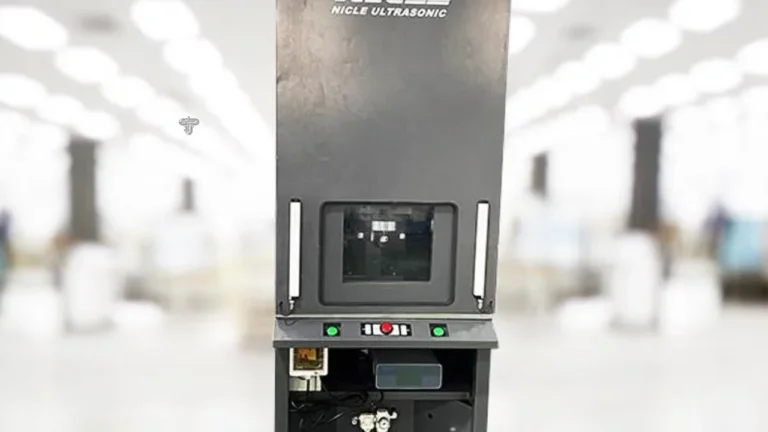What is Through Hole Assembly & Why is it Important?
Through hole assembly is one of the oldest and most conventional methods of electronic circuit board assembly, where component leads are joined using soldering, after being inserted into pre-drilled holes in a printed circuit board (PCB). The age-old tradition has remained the pillar of manufacturing electronics generation after generation and is still at the core of the culture of manufacturing today even with surface mount technology. The through-hole assembly is preceded by the preparation of the PCB, which includes drilling the holes on a precise basis according to the footprint of each electronic component. The holes have previously been plated with conductive material so that appropriate electrical contact could be made between the component leads and traces on different layers of the board. Through-hole assembly components have wire leads or pins that are designed to reach all the way through such holes, making a mechanical contact which is then soldered into place.
Through Hole Assembly Explained:
The actual build can be accomplished through numerous varied processes, ranging from hand insertion and soldering to extremely automated systems. Hand assembly may involve technicians picking up each piece and placing it into its correct location, ensuring that it is aligned properly and seated prior to proceeding to the soldering stage. Semi-automated processes may use insertion machinery for certain parts but reserve manual operations for others. It is totally mechanised through the employment of highly sophisticated tools that are capable of doing component placement, lead trimming, and wave soldering or selective soldering processes. Wave soldering is the most common automatic soldering method employed in through hole assembly, wherein the board to be assembled is conveyed over a wave of molten solder to establish good electrical as well as mechanical contact. It is an exacting process requiring control of temperature, flux application, and timing for optimal results. Selective soldering is a modification that is used to exact areas of the board for greater control over the soldering and less thermal stress upon sensitive devices.
Advantages of Through Hole Assembly:
The mechanical strength imparted to through hole assembly is one of the primary advantages of through hole for companies operating in harsh environments. The physical bond that is created when component leads are drawn through the PCB and soldered on both sides creates very robust joints that can tolerate high mechanical stress, vibration, and thermal cycling. This longer life makes through hole assembly particularly well-suited to aerospace, automotive, industrial equipment, and military electronics uses where reliability under extreme environments is of the greatest concern. On a corporate level, through-hole assembly offers economic advantages in certain production circumstances. The tooling and equipment required for standard through hole assembly processes tend to be a lower capital outlay than the high-precision placement machines for fine-pitch surface mount devices. The availability of it makes through hole assembly a more feasible alternative for corporations that are starting electronics manufacturing or for those corporations that produce lower-volume, niche-type products where the expense of the high-end SMT equipment may not be economically justifiable.
The rework and repair that’s facilitated by through hole assembly is incredibly good business value in terms of both customer satisfaction and product lifecycle management. When components fail or require upgrading, through hole mounted components can be simply removed and replaced with very minimal soldering equipment. This serviceability extends the life of products, reduces warranty costs, and allows field repairs impossible with highly dense surface mount designs. For businesses that sell to markets where they foresee long-term product upkeep, this capability is an excellent competitive selling feature. In addition, the quality control and inspection procedures were made possible due to the visual accessibility of component placement and the solder joints. Solder fillet quality, component orientation, and the integrity of the joints can be visually inspected, easily by inspectors without the use of sophisticated equipment. This exposure of the process allows for sustaining quality levels all along and for identifying process defects early, prior to their influencing large quantities of product.
Utilising Through Hole Assembly:
Workforce development and training are also business benefits of through hole assembly. Basics of through hole assembly and rework are more readily learned than fine-pitch surface mount work, enabling firms to establish manufacturing capability earlier and with greater labour pools. This availability reduces training cost and provides greater flexibility in workforce management. For businesses that make specialized equipment or serve niche markets, through hole assembly has the advantage of accommodating specialist or custom parts that are not available in surface mount packages. This kind of flexibility enables businesses to differentiate products and fill specific customer requirements that would be difficult to meet with the exclusive use of standard surface mount parts. Through hole assembly thermal management features can provide business value in the regions where heat sinking is critical. The mechanical design of through hole components will generally enable easier thermal transfer to the PCB and the use of larger heat sinks and cooling techniques. This enables the design of products by companies with better thermal performance without the complexity and cost of advanced thermal management systems. Mixed-technology approaches featuring through hole and surface mount assembly on the same board enable companies to design both for economy and performance. This feature gives the engineer the capability to opt for through hole technology where best applied to its capabilities and use surface mount technology where board space is at a premium or high-density circuitry areas are needed.
Conclusion:
Through hole assembly continues to provide great business value by its combination of mechanical integrity, low cost, reparability, and manufacturability accessibility. While surface mount technology dominates high-volume consumer electronics, through hole assembly remains the technology of choice for applications requiring long-term reliability, serviceability, and rugged performance under challenging conditions. Those companies that acknowledge and leverage these strengths are capable of building competitive advantages in markets where these characteristics are preferred over miniaturisation and high-density integration.







